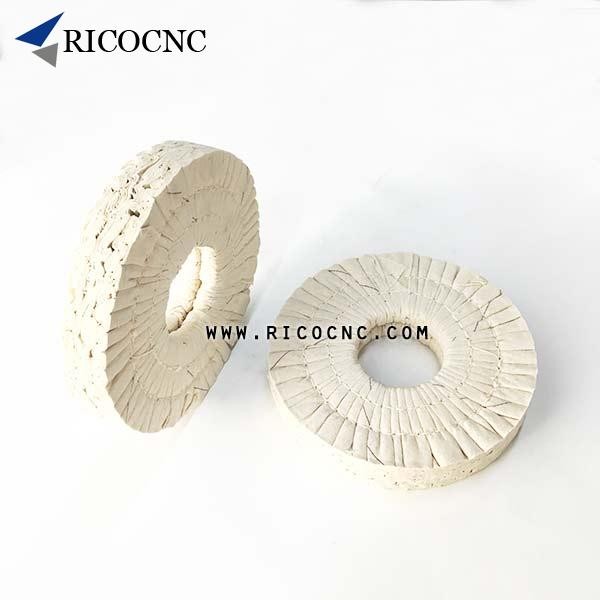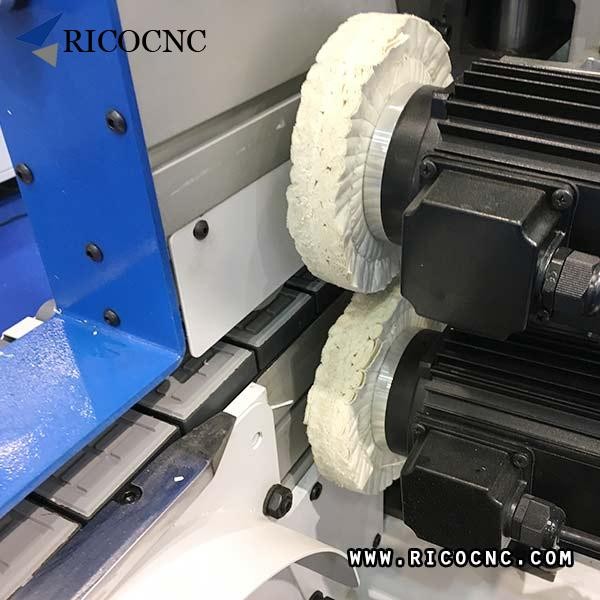Buffing wheels are essential tools for achieving that perfect shine on various materials. However, a dirty buffing wheel can compromise your results and even damage your workpiece. This comprehensive guide will walk you through the process of cleaning your buffing wheel, ensuring optimal performance and longevity. Whether you're a professional metalworker or a DIY enthusiast, mastering this maintenance task is crucial for achieving the best possible finish on your projects.
Before we dive into the cleaning process, let's understand why keeping your buffing wheel clean is so crucial. A clean buffing wheel:
1.Produces better results
2.Prevents cross-contamination between different materials
3.Extends the life of your buffing wheel
4.Ensures safer operation
When you use a buffing wheel, it accumulates debris, polishing compounds, and material particles. Over time, this buildup can affect the wheel's performance and even scratch your workpieces. Regular cleaning helps maintain the wheel's effectiveness and protects your projects.
Before we start the cleaning process, let's gather the necessary tools:
-Buffing wheel rake or crepe stick
-Stiff-bristled brush
-Compressed air (optional)
-Cleaning solvent (appropriate for your buffing compound)
-Clean cloths
-Protective gloves and safety glasses
Having these tools ready will make the cleaning process smoother and more efficient. Remember, safety should always be your top priority when working with power tools and cleaning agents.

The frequency of cleaning depends on how often you use your buffing wheel and what materials you work with. As a general rule:
-Light users: Clean every 2-3 months
-Moderate users: Clean monthly
-Heavy users: Clean weekly or after each major project
Pay attention to your buffing wheel's performance. If you notice a decrease in efficiency or uneven results, it's time for a cleaning session. Regular maintenance will help you avoid more time-consuming deep cleans in the future.
Now, let's get into the nitty-gritty of cleaning your buffing wheel. Follow these steps for the best results:
1.Safety first: Put on your protective gloves and safety glasses.
2.Remove loose debris: With the wheel mounted and rotating slowly, gently press the buffing wheel rake against the surface. This will remove loose particles and fluff up the fibers.
3.Use a stiff brush: Turn off the wheel and use a stiff-bristled brush to remove any remaining loose debris.
4.Apply cleaning solvent: If necessary, apply a small amount of appropriate cleaning solvent to a clean cloth and gently work it into the wheel's surface.
5.Rinse and dry: If you used a solvent, rinse the wheel with clean water and allow it to dry completely before use.
6.Fluff the wheel: Once dry, use the rake again to fluff up the fibers and restore the wheel's texture.
Remember, never clean a buffing wheel while it's rotating at high speed, as this can be dangerous and damage the wheel.
Prevention is always better than cure. Here are some tips to keep your buffing wheel cleaner for longer:
-Use different wheels for different materials and compounds
-Store wheels properly when not in use
-Clean your workpieces before buffing
-Apply buffing compounds sparingly
By following these preventive measures, you'll reduce the frequency of deep cleaning sessions and extend the life of your buffing wheels.
Buffing wheels come in various materials, each with its own cleaning considerations:
1.Cotton wheels: These are the most common and can be cleaned using the method described above.
2.Sisal wheels: These are tougher and may require more aggressive cleaning with a wire brush.
3.Microfiber wheels: These are delicate and should be cleaned gently, often with just compressed air and a soft brush.
4.Wool wheels: These can be cleaned similarly to cotton wheels but may require more careful drying to prevent matting.
Understanding the type of buffing wheel you're working with will help you choose the most appropriate cleaning method.

Even experienced users can make mistakes when cleaning buffing wheels. Here are some common pitfalls to avoid:
-Using excessive force when cleaning, which can damage the wheel
-Cleaning the wheel while it's rotating at high speed
-Using the wrong cleaning agents, which can degrade the wheel material
-Not allowing the wheel to dry completely before use
By avoiding these mistakes, you'll ensure that your cleaning efforts are effective and don't cause unintended damage to your buffing wheel.
While regular cleaning can extend the life of your buffing wheel, eventually, it will need to be replaced. Signs that it's time for a new wheel include:
-Uneven wear or bald spots
-Fraying or separation of fibers
-Persistent odors or discoloration
-Inability to achieve desired results despite proper cleaning
If you notice any of these signs, it's time to invest in a new buffing wheel to maintain the quality of your work.
Professionals who use buffing wheels regularly have developed some tricks to keep their tools in top condition:
1.Rotate wheel usage to ensure even wear
2.Use color-coded wheels for different compounds to prevent cross-contamination
3.Store wheels in a cool, dry place away from direct sunlight
4.Regularly inspect wheels for signs of wear or damage
By incorporating these professional tips into your routine, you'll get the most out of your buffing wheels and achieve consistently excellent results.
The condition of your buffing wheel directly affects the quality of your finished products. A well-maintained wheel:
-Produces a more consistent finish
-Reduces the risk of scratches or swirl marks
-Allows for more efficient buffing, saving time and effort
-Enhances the overall professional appearance of your work
Investing time in proper maintenance not only saves money in the long run but also ensures that your craftsmanship shines through in every project.
-Regular cleaning is essential for optimal buffing wheel performance
-Use the right tools and follow a step-by-step process for effective cleaning
-Different types of buffing wheels may require specific cleaning methods
-Avoid common mistakes that can damage your buffing wheel
-Know when it's time to replace your buffing wheel
-Implement professional tips for maintaining buffing wheel performance
-Proper maintenance directly impacts the quality of your finished work
By following these guidelines, you'll keep your buffing wheels in top condition, ensuring that your polishing projects always come out looking their best. Remember, a clean buffing wheel is the secret to a perfect shine.
Contact: RicoCNC
Phone: 0086-13390848665
E-mail: cncsale@ricocnc.com
Whatsapp:0086-15264185266
Add: NO. 60, Weixin Road, Industrial Park, Suzhou, Jiangsu, China, 215000
We chat
